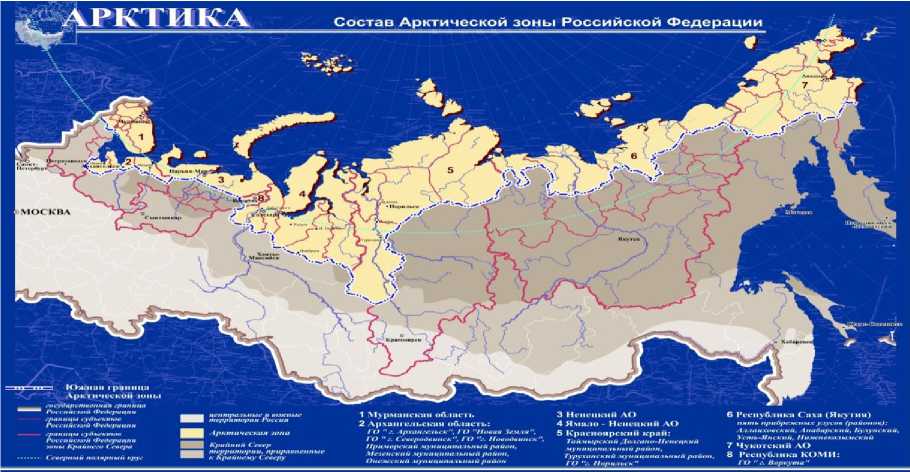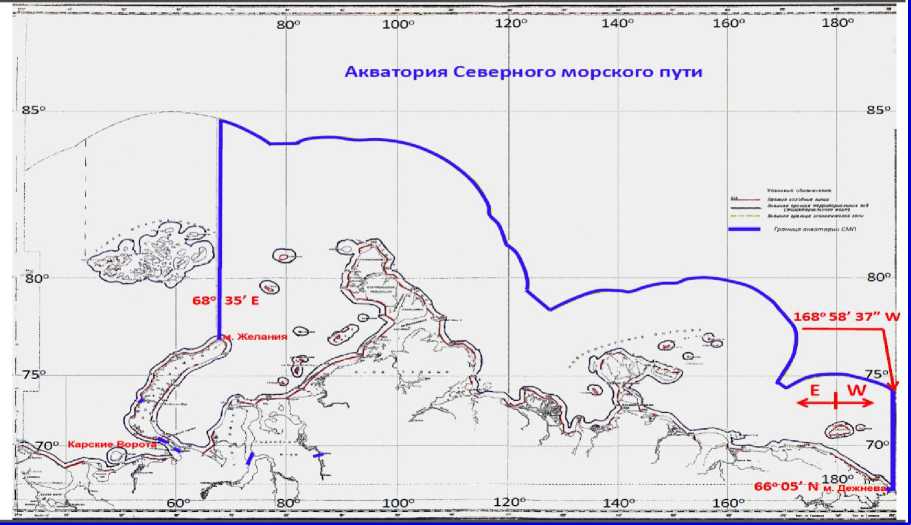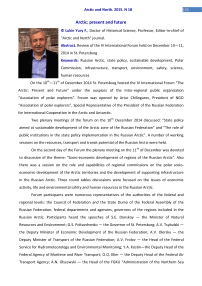Arctic: present and future
Автор: Lukin Yury F.
Журнал: Arctic and North @arctic-and-north
Рубрика: Reviews and reports
Статья в выпуске: 18, 2015 года.
Бесплатный доступ
Review of the IV International Forum held on December 10—11, 2014 in St. Petersburg.
Russian Arctic, state policy, sustainable development, Polar Commission, infrastructure, transport, environment, safety, science, human resources
Короткий адрес: https://sciup.org/148318751
IDR: 148318751
Текст научной статьи Arctic: present and future
Arctic: Present and Future” under the auspices of the Inter-regional public organization “Association of polar explorers”. Forum was opened by Artur Chilingarov, President of NGO “Association of polar explorers”, Special Representative of the President of the Russian Federation for International Cooperation in the Arctic and Antarctic.
Two plenary meetings of the forum on the 10th December 2014 discussed: “State policy aimed at sustainable development of the Arctic zone of the Russian Federation” and “The role of public institutions in the state policy implementation in the Russian Arctic”. A number of working sessions on the resources, transport and transit potential of the Russian Arctic were held.
On the second day of the Forum the plenary meeting on the 11th of December was devoted to discussion of the theme: “Socio-economic development of regions of the Russian Arctic”. Also there was a session on the role and capabilities of regional commissions on the polar socio- economic development of the Arctic territories and the development of supporting infrastructure in the Russian Arctic. Three round tables discussions were focused on the issues of economic activity, life and environmental safety and human resources in the Russian Arctic.
Forum participants were numerous representatives of the authorities of the federal and regional levels: the Council of Federation and the State Duma of the Federal Assembly of the Russian Federation, federal departments and agencies, governors of the regions included in the Russian Arctic. Participants heard the speeches of S.E. Donskoy — the Minister of Natural Resources and Environment; G.S. Poltavchenko — the Governor of St. Petersburg; A.V. Tsybulski — the Deputy Minister of Economic Development of the Russian Federation; A.V. Olersky — the Deputy Minister of Transport of the Russian Federation; A.V. Frolov — the Head of the Federal Service for Hydrometeorology and Environmental Monitoring; Y.A. Kostin—the Deputy Head of the Federal Agency of Maritime and River Transport; O.O. Klim — the Deputy Head of the Federal Air Transport Agency; A.N. Olszewski — the Head of the FGKU “Administration of the Northern Sea
Route”; S.G. Antonov — the Deputy DG for Corporate Development of the “Rosmorport”; K.A. Stepanian — the Deputy DG for maritime transport of the “Sovfraht”; V.V. Stepov — the Vice President of the JSC “Russian Railways”; M.N. Khailov — the Deputy Head of the Federal Space Agency; A.A. Boers — the Chairman of the Board of Directors of the IC “Belkomur” and other top managers.
The Forum had become one of the most representative events due to the composition of its participants — federal and regional authorities and management, industrial, shipbuilding, transport and etc. Completing an annual program dedicated to the development of the Arctic region in Russia, the Forum “The Arctic: Present and Future ”was the culminating event, combining all solutions done during the year and consolidating the efforts of government, business and the public. In my opinion, to a large extent it was done due to the authority of the polar leader A.N. Chilingarov. The Forum participants heard a lot of meaningful reports and presentations by heads of federal departments and agencies.
Were decisions of the Forum the same adequate as the composition of top managers? - It remains, as they say, behind the scenes. The Forum decisions remain unknown for the public. It was declared that the “final Resolution with suggestions and recommendations would be the starting point for work of the organizations involved in the development and implementation of various projects in the Arctic, in 2015. The document would also be sent to the authorities to improve legislation and state regulation in the field of sustainable development in the Arctic”. In a statement intended to introduce the concept of social product of the forum — the public resolution. I would like to get acquainted with it and analyze it.
The forum was an exhibition where technologies and developments in the field of exploration and mining operations, development of the transport complex, navigation support, construction, research activities, shipbuilding and shipping were introduced.
One of the features of the December Petersburg Forum was the presentation of the mechanisms of interaction between government, business and the public done by the “Association of polar explorers” (ASPOL): a) Public Commission on issues relevant to the development of the Arctic zone of the Russian Federation; b) Polar Commission as part of the authorities in the Russian regions. On the first day of the Forum strategic sessions of public commissions of the Association of Polar Explorers, created in 1991, were held and focused on three areas: environment, science and technology, science and higher education, social projects. As the result some starting points on how to get the ASPOL’s job done more efficiently were outlined previously in A.N. Chilingarov’s address to Congress of the ASPOL1.
A lot of interesting reports on all areas of life in the Arctic sounded at the Forum in St. Petersburg. It is impossible to cover all considerations, specific proposals from the rich treasury of the information that was put forth, remained in the speaker's presentations and still waiting to be explored. A.V. Kotov and A.N. Pilyasov, for example, spoke on the strategic management of the Russian Arctic, made proposals on the center of responsibility and the model Arctic Federal District.

рема т
РОССИЙСКИЙ СОВЕТ по международный пер am
В России новый центр ответственности за выработку федеральной политики может стать:
1)либо самостоятельным Министерством в структуре Правительства РФ;
-
2) либо Министерством, - учитывая важное оборонное и стратегическое значение Арктики, напрямую подчиненным Президенту РФ (как Министерство обороны, МЧС России);
-
3) либо агентством в структуре Минэкономразвития России. Работая под эгидой Минэкономразвития России, агентство могло было бы объединить и координировать усилия всех сегодня разрозненных ученых советов, комиссий, административных структур, занимающихся северной и арктической проблематикой.
Модели рсмд
Арктического федерального округа
РОССИЙСКИЙ СОВЕТ
ПО МЕЖДУНАРОДНЫМ ДЕЛАМ ^^^^^^^^^^^^^^^^^^^^^^^^^^^^^^^^^^^^^^^^^^^^^^^^^^^^^^^^^^^^^^^^^
|
Критерий |
Модель 1 (жесткий вариант) |
Модель 2 (промежуточный) |
Модель 3 (мягкий вариант) |
|
Цс II. |
Встраивание российской Арктики в существующую систему федеральных округов |
Явно укрепить •экономические связи Арктической зоны Российской Федерации |
Неявно укрепить связи в Арктической зоне Российской Федерации через информационные потоки |
|
Доминирующие институты |
Федеральные |
Региональные |
Местные/регпональные |
|
Перархия/отношеиия участников |
Централизованный характер, однонаправленное воздействие на объект |
Многосубьектный одноуровневый характер |
Наборы отношении гражданского, экономического и другого характера многих видов |
|
Возможности международного сотрудничества |
Определенность работы и форматов сотрудничества, заданных федеральным центром. Сила мнения федерального центра, подкрепленная бюджетными |
Обособленность участников, легкий вход и выход из проектов; существует проблема взаимоувязки интересов всех акторов |
Большие массивы информации, открывающие многообразие путей сотрудничества |
Pictures 1,2. © Kotov A.V. and Pilyasov A.N.
Состав Арктической зоны Российской Федерации

Picture 3. Arctic zone of the Russian Federation in 2014 г./© Tsybulsky A.V.
This picture shows a map of the Russian Arctic.
The map of the Northern Sea Route and statistics presented by the Head of the FGKU
“Administration of the Northern Sea Route” A. Olshevskiy would be interesting for those professionals who deal with the problems of the Northern Sea Route (Pictures 4 5).
ФГКУ «Администрация Севморпути»

Picture 4. Map of the Northern Sea Route/© A.N. Olshevskiy

ФГКУ «Администрация Севморпути»
Объемы перевозки грузов по Севморпути по состоянию на 01 декабря 2013 и 2014 года (тысячи тонн)
|
На 01.12.2013 |
На 01.12.2014 |
увеличение/ уменьшение |
|
|
порты СМП |
2 602 |
3 512 |
+ 910 (35 %) |
|
транзит |
1 176 |
274 |
- 902 (77 %) |
|
Всего |
3 778 |
3 786 |
+ 8 (0,2 %) |
Picture 3. Volume of cargoes carried along the NSR in 2013 and 2014 /© A.N. Olshevskiy


